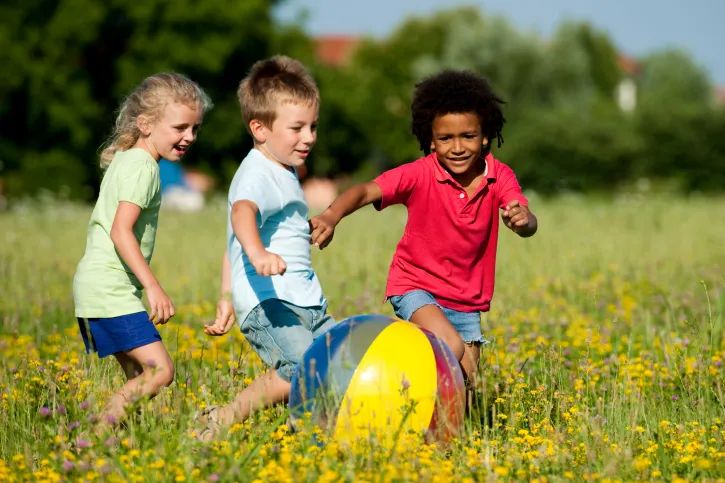Child’s Play Is No Trivial Matter
All Work is Child’s Play?
Child’s-play is no trivial matter

Dr. Maria Montessori called play the work of the child. She recognized the vast importance and productivity of play activities in the development of children.
“Such experience is not just play ...it is work he must do in order to grow up.” - Dr. Maria Montessori
And yet, the division of work and play in today’s classrooms is becoming increasingly prevalent. More and more, schools view passive desk work and rote memorization as the only methods of serious learning, and physical playtime as a filler, something to keep children occupied when they are not learning important academics. The American Heritage Idioms Dictionary says it all, defining the term “child’s play” as “something easily done, a trivial matter."
In this age of test scores and statistics, schools seem to have lost sight of the proven connection between work and play in child development. Long ago, Maria Montessori discovered and understood the central role of play in learning. In fact, she considered work and play to be nearly inseparable.
Does Nature make a difference between work and play or occupation and rest? Watch the unending activity of the flowing stream or the growing tree. See the breakers of the ocean, the unceasing movements of the earth, the planets, the sun and the stars. All creation is life, movement, work. What about our hearts, our lungs, our bloodstream which work continuously from birth till death? Have they asked for some rest? Not even during sleep are they inactive. What about our mind which works without intermission while we are awake or asleep? (Dr. Maria Montessori, What You Should Know About Your Child)
Is Education Going the Wrong Way?
Many educators, policy makers, and even parents have concluded that the answer to our country’s slipping educational standards is to increase the amount of time children are expected to sit quietly. Teachers deliver lectures and assign textbook reading or worksheets to sedentary and often restless students. Fewer and fewer are the hands-on lessons and interactive assignments. Today’s students are expected to “sit still” for increasing lengths of time during the average school day. None too surprisingly, today’s students are also prone to behavioral problems such as hyperactivity, inattentiveness, and increased aggression.
"Can I go play now?"

Without time to explore and experiment, children can become restless, jittery, and even anxious. Soon, they lose interest in learning. Test scores plummet and educators react by clamping down even harder. And so the vicious cycle goes on. Sadly, the love of learning isn’t the only thing lost in the mix; children also lose the chance to gain confidence in their own abilities. They lack independence, self-motivation, and ambition. These are the sad consequences of wrenching apart the innate tendencies of the child’s work and play. In 2009, a Scientific American article entitled “The Serious Need for Play,” stated “unstructured, imaginative play […] is critical for becoming socially adept, coping with stress and building cognitive skills such as problem solving.”
We know from Maria Montessori’s brilliant method and message that making learning active, playful, and discovery-rich, is more important than cramming copious quantities of dubious data. In other words, the way you teach is more important even than what you are teaching. If the child is engaged, interested, and happy, his inner aptitude will flourish. He will take learning into his own hands, willingly and enthusiastically. We can ask for no greater gift than that!
To learn more about Maria Montessori's insights into the way children really learn, visit Age of Montessori's information rich website. Enjoy the many free resources you'll find there, and sign up for one of the many online courses. We hope to see you there!




















